Wetlands in the Western Indian Ocean region are not just a pretty sight, they are vital ecosystems that support a diverse array of life. They include salt marshes, seagrass beds, and mangrove forests. These unique habitats are homes, breeding and feeding grounds for species such as fish, turtles, sea cucumbers, molluscs, corals, mangroves, and seagrasses. Additionally, wetlands in the Western Indian Ocean region also have significant economic and cultural value. However, these wetlands are under threat from human activities such as pollution through the release of untreated wastewater from cities and settlements, upstream activities like agriculture, deforestation, and natural disasters such as cyclones.
But there's hope! Efforts to safeguard and maintain these invaluable wetlands are in full swing. From Chake Chake, Pemba, where drainage capacity is being boosted, to Seychelles, where locals are being educated on wetland restoration, to the Limpopo estuary in Mozambique, where mangroves are being replanted, to Mtwapa Creek in Kenya, where raw sewage is being treated through constructed wetland technology, UNEP and the Global Environment Facility are working together on wetland construction and conservation endeavours that are having a tremendous impact on preserving the biodiversity of ecosystems in the Western Indian Ocean region.

Protecting The Plaine Hollandaise-Pasquière wetlands in Seychelles
The Plaine Hollandaise-Pasquière wetlands have been degrading over time due to human activities. According to Ms. Elvina Henriette of the Terrestrial Restoration Action Society of Seychelles (TRASS), "forest fires that occurred 30 to 40 years ago caused degradation in the mountains, which then leads to soil flowing down into the wetlands." This erosion not only allows invasive species to thrive, negatively impacting the biodiversity of the wetlands, but it also hinders the wetlands' ability to perform their natural functions, such as flood prevention. Furthermore, the excess soil flowing into the sea turns the water red and damages coral reefs, sandbanks, and seagrass, which are important attractions that make the Curieuse Marine Park a valuable area for tourism.
A joint project between TRASS and UNEP is revitalizing the Plaine Hollandaise-Pasquière wetlands by using anti-erosion methods, planting native species, and working with the local community in restoration efforts. Not only is this restoration project bringing new life to the wetland, but it has also welcomed rare and endangered species to the island like the Sooglossid frog, which was previously thought to only live at high altitudes. The restored wetlands will not only protect these unique species but also provide economic and physical security to the local Seychellois community by preserving the aesthetic and ecosystem functions of the Curieuse Marine Park beaches and reducing floods.
Using constructed wetland technology to improve water quality on Pemba Island, Tanzania
The scenic Zanzibar archipelago is home to over 1.3 million people who rely on the ecological and socio-economic importance of its coastal ecosystems. However, these ecosystems are under intense pressure from pollution and land-based activities, such as the release of untreated industrial effluent from municipalities and coastal settlements.
An initiative is addressing the pressing issues of pollution and the effects of land-based activities in the Zanzibar archipelago. This demonstration project is focused on providing additional waste and stormwater drainage capacity for Chake Chake Town in order to support the existing Mtoni-Msingini Wastewater Treatment System. This is being implemented using constructed wetland technology. Constructed wetlands are systems that mimic the natural processes of wetland plants, soil, and microbes to clean and purify water.
The project has amplified the existing wastewater treatment system by increasing its adaptive capacity, modifying its hydraulic operation, and introducing more effective plant species. Additionally, the initiative is working to enhance enforcement and legislative frameworks and raise community awareness. This is all being done to ensure that the local communities can continue to rely on Zanzibar’s coastal ecosystems for their livelihoods.
Restoring Mangroves in the Limpopo Estuary in Mozambique
In 2000, the Mahielene community in Xai-Xai, Mozambique, was hit by Cyclone Eline. The storm brought devastating consequences to the community, destroying nearly 60% of the mangroves. These mangroves were the backbone of the community's livelihood and coastal protection. The residents relied on the mangroves for wood and fish, which they ate or sold. The destruction of the mangroves not only left the community without their livelihood but also resulted in the loss of a natural barrier against pollution, coastal erosion, and flooding.
Today, an effort led by the community, government, and partners, is underway to bring the mangroves back to life. Despite progress; with 120 hectares of thriving mangroves, 400 more hectares need to be restored to reach pre-cyclone levels. The project has also incorporated alternative livelihoods, namely beekeeping and pig farming, to enhance food security.
Mangrove swamps are coastal wetlands. They store huge amounts of carbon. This makes them very efficient mitigators of climate change and contributors to Sustainable Development Goal 13: taking urgent action to combat climate change and its impacts. They also provide nursery areas for fish, crustaceans, and many endangered species and protect shorelines from eroding.

Improving Water Quality in Mtwapa Creek, Kenya with Constructed Wetland Technology at Shimo la Tewa prison
For a long time, crossing Mtwapa Bridge in coastal Kenya had been associated with the pungent stench emanating from Mtwapa Creek. Mtwapa Creek is an inlet of the Indian Ocean. It is in the vicinity of the Shimo la Tewa government prison and supports artisanal fisheries and a number of tourist facilities. Over time, the increasing population of the prison could no longer be served by the existing sewage treatment infrastructure, leading to the discharge of untreated sewage into nearby Mtwapa Creek. This posed significant environmental hazards, particularly to the delicate coral reefs of the Mombasa Marine Park, as well as to local aquatic life. Furthermore, the potential disruption of local ecosystems and loss of biodiversity could also have a detrimental effect on the region's tourism industry.
A project with the Kenya Marine and Fisheries Research Institute, Shimo la Tewa prison, the National Environment Management Authority, and GreenWater aims to address this problem using constructed wetland technology to manage wastewater at the prison. Constructed wetlands are artificially created systems that mimic the functions of natural wetlands by utilizing wetland plants, soils, and microbial communities to enhance the treatment of wastewater through the manipulation of physical, chemical, and biological processes that take place in natural wetlands.
The system that's being used for the Shimo la Tewa constructed wetland has reduced the harmful chemicals in the wastewater by more 40%. It has also decreased the number of harmful bacteria in the water and filtered out particles, adding oxygen to the water. This constructed wetland is slowly restoring the beauty and health of the Mtwapa area.
As we mark World Wetlands Day on February 2, it is vital to remember the crucial role these ecosystems play in preserving the biodiversity, resources, and cultural heritage of the Western Indian Ocean. By protecting these wetlands, we can ensure that these unique and beautiful coastal habitats remain a treasure trove of biodiversity for years to come.
Read more about Nairobi Convention’s WIOSAP project that is implementing these wetland and water quality improvement projects.
Implementation of the Strategic Action Programme for the Protection of the Western Indian Ocean from Land-based Sources and Activities (WIOSAP) project is implemented by UN Environment Programme and executed by the Nairobi Convention with funding from the Global Environment Facility (GEF)




